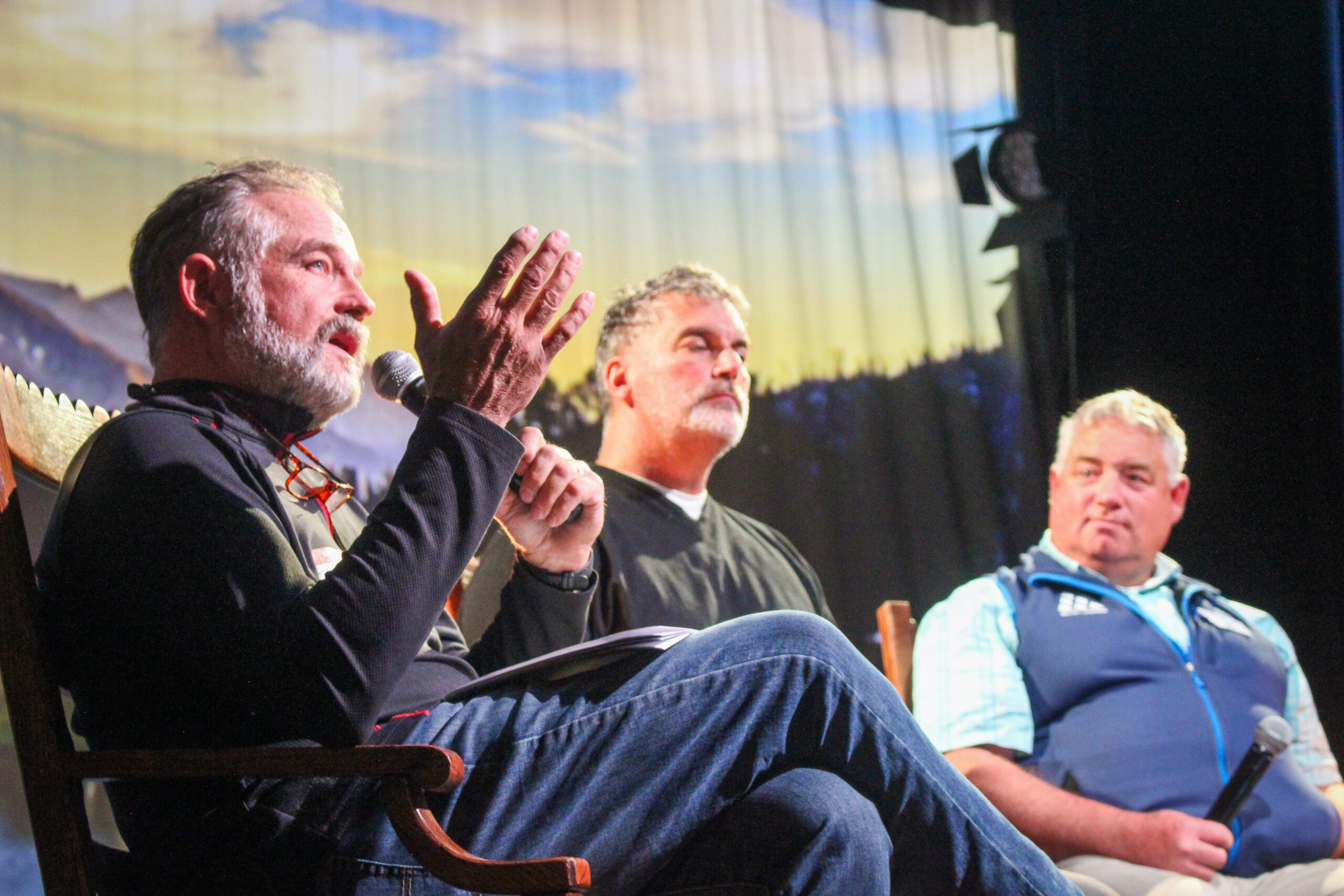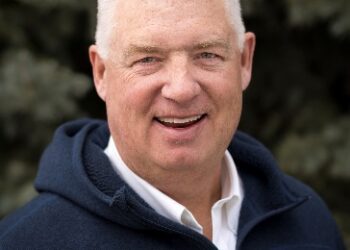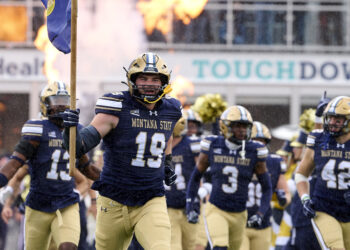Five speedy panels summarize current challenges, future initiatives and needs across full spectrum of Big Sky organizations
By Jack Reaney ASSOCIATE EDITOR
It was staged for comfort—five panels of three local experts sitting in armchairs beside antique lightbulbs backdropped by a photo of Beehive Basin. Together, they shared expertise on the topics most important to their professional and community interests.
The “State of the Community” took place at the Warren Miller Performing Arts Center on Oct. 3. The presentation remains available on YouTube, and in the summary below, video links to individual speakers and discussion topics are provided.
“Imagine yourself in a living room,” Daniel Bierschwale, executive director of the Big Sky Resort Area District, said during the event’s introduction—BSRAD co-planned Big Sky Community Week, including the Oct. 3 gathering. “This is Big Sky’s living room; it’s a safe place.”
The event was facilitated with disarming wit by WMPAC executive and artistic director John Zirkle and community member Tallie Lancey. Event organizers counted more than 150 in attendance, including 36 through live stream.
“Oh man, I was thrilled by the amount of public engagement and participation—from people I have never seen engaged in these conversations. It’s meaningful when you really start to see folks wanting to get involved,” Bierschwale told EBS after the event.
Brad Niva, CEO of the Big Sky Chamber of Commerce which co-planned Community Week, added his view:
“Because [this community] doesn’t have a municipality, this community needs involvement to make things happen. And three years in the works between the chamber and BSRAD, trying to get more community involvement—I think this is the cumulation of three years of hard work. People are showing up, people have a voice, people are learning. And that’s the best thing about Community Week,” Niva said after the event.
The show included five sections: panels of local leaders from organizations responsible for recreation and conservation, health and safety, education and wellness, public works and ‘building community’—Big Sky’s two largest employers shared visions.
The river, the SNO and the parks and trails
The first 25-minute panel explored recreation and conservation, with leaders from the Gallatin River Task Force, Big Sky Sustainability Network Organization (SNO) and Big Sky Community Organization.
Kristin Gardner, the task force’s chief executive and science officer, presented first. She summarized how “conservation has not kept up to [Big Sky’s] 176% growth” between 2010 and 2020, but noted that Gallatin River fish populations are generally strong, and that the U.S. Forest Service is looking to GRTF for leadership on roughly 20 Gallatin River restoration projects—the USFS lacks capacity and funding to make immediate impacts, she explained.
Lizzie Peyton, director of community sustainability with Big Sky SNO, took the microphone next. In 2021, data showed more than 104 million vehicle miles driven in Big Sky—about 11 million more than the distance to the sun. She described the “massive opportunity” to increase composting to divert some of Big Sky’s extraordinary food waste. Peyton added that Big Sky SNO is making a push toward reducing emissions related to buildings and energy use.
Ashley Wilson, director of finance and administration for BSCO, provided an overview of parks and trails in Big Sky. She said BSCO is proud to offer 32 miles of accessible and free mixed-use trails, noted the new book club at BASE, with members ranging from 20 to 80 years old, and that in response to feedback from many workers in the community, BASE would extend its hours beginning Dec. 1.
Wilson summarized BSCO’s three-year strategic plan, unveiled in July, which includes renovations to the Big Sky Community Park and a new South Fork Park near Town Center.
WATCH: Zirkle concluded the first panel with questions for the remaining five minutes: how do we balance recreation and conservation in a virtuous way? What are the tools available?
A sheriff, a fire chief, and a hospital administrator walk onto a stage…
Chris Darnell, administrator for Bozeman Health Big Sky Medical Center, began the health and safety discussion by describing 2022 as “the worst year for healthcare financials ever, in the history of time.”
Despite the challenges following the COVID-19 pandemic, Darnell was proud to share that the eight-year-old Big Sky Medical Center does see an upside: the hospital recently earned designation as a level-five trauma receiving facility and in the past year, added outpatient physical therapy and a swing-bed program.
Noting Big Sky Medical Center’s neutrality on the topic, Darnell also pointed out that a pair of petitions are listed online to create a “wellness district” in Big Sky—the two petitions are to de-annex from the existing hospital district and to create one unique to Big Sky.
Gallatin County Sheriff Dan Springer followed Darnell with a sharp statistic: from 2019 to 2022, criminal cases have increased by 50% in the Big Sky area. As Big Sky lacks a police force and the demand for law enforcement increases, Springer was pleased to share that the Sheriff’s office increased deputy staffing in Big Sky from six to eight deputies, and the county now offers 24/7 coverage in Big Sky.
Springer pointed out the challenge of housing those deputies in Big Sky, and the benefits of connection between law enforcement and their community. Providing housing will be a priority, he explained.
Big Sky Fire Department Chief Greg Megaard shared a plan for a three-story fire training facility across from the Powder Light apartments—currently, the nearest training facilities are in Belgrade. He also spoke about a third fire station in the Spanish Peaks community area, to improve response time, and announced that a “fire mitigation crew” will engage homeowners and subdivisions to reduce fire hazards and other fire risk factors on properties community-wide.
Lancey asked all three officials: are we, as local residents, safe here?
Sheriff Springer answered yes, that crime rates in Gallatin County and the Big Sky area are low, “but we want to kind of continue to keep it that way” and the presence of Sheriff’s deputies is key.
Chief Megaard agreed that current fire safety is strong, and BSFD’s responsibility is continued improvement. Darnell echoed that view.
Compelling numbers from education and wellness
Just short of an hour into the “State of the Community,” the third panel took the stage to discuss education, childcare and local service needs.

Dr. Dustin Shipman, superintendent of the Big Sky School District, shared the completion of phase two of BSSD’s three-phase master facilities plan, and the launch of a 4-K program. Shipman also beamed that Lone Peak High School was recently ranked atop Montana public schools for college readiness.
Big Sky Community Food Bank manager Sarah Gaither Bivins spoke on community wellness. She discussed Big Sky’s behavior health coalition—representatives from Wellness in Action, BSCO, Big Sky Medical Center, HRDC, Yellowstone Club Community Foundation and the food bank.
Last winter, Gaither Bivins said, was a “severe crisis. Last winter almost broke us, it felt like. My [food bank] services at the food bank were up 97% from the year before, which was up 60% from the year before that. I’ve been doing this for 10 years, and I’d only ever seen a 10% increase.” The increase, she said, is due to both inflation and Big Sky’s growing workforce population.
She also advocated for the creation of a wellness district, which will require steps including a petition. She pointed out that WIA saw a 250% increase in demand for counseling services.
Jackie Haines, executive director of the Northern Rocky Mountain Economic Development District, elicited gasps from the crowd with statistics on Big Sky’s childcare and family living costs: 75% of two-parent families have two parents in the workforce, compared to Gallatin County (65%) and Madison County (57%). In Big Sky, 96% of women with children are in the labor force, compared to Gallatin County (66%) and Madison County (51%).

From a Big Sky childcare survey with 244 respondents, the average annual cost for childcare in Big Sky is $20,796—16.2% of median family income, compared to the national affordability standard of 7%. Haines went on, showing the drastic hurdles facing Big Sky families. And with American Rescue Plan Act funding going away after 2023, Haines pointed out that childcare providers are facing a “funding cliff.”
Big Sky’s full childcare report is available here and Elevate Big Sky hosts an information page on livability.
Updates on public infrastructure
Brad Niva kicked off the public works panel with announcement that new wayfinding signs will be installed next spring to create a sense of place in Big Sky. He also described his effort to lead Big Sky Chamber of Commerce away from requiring resort tax funding.
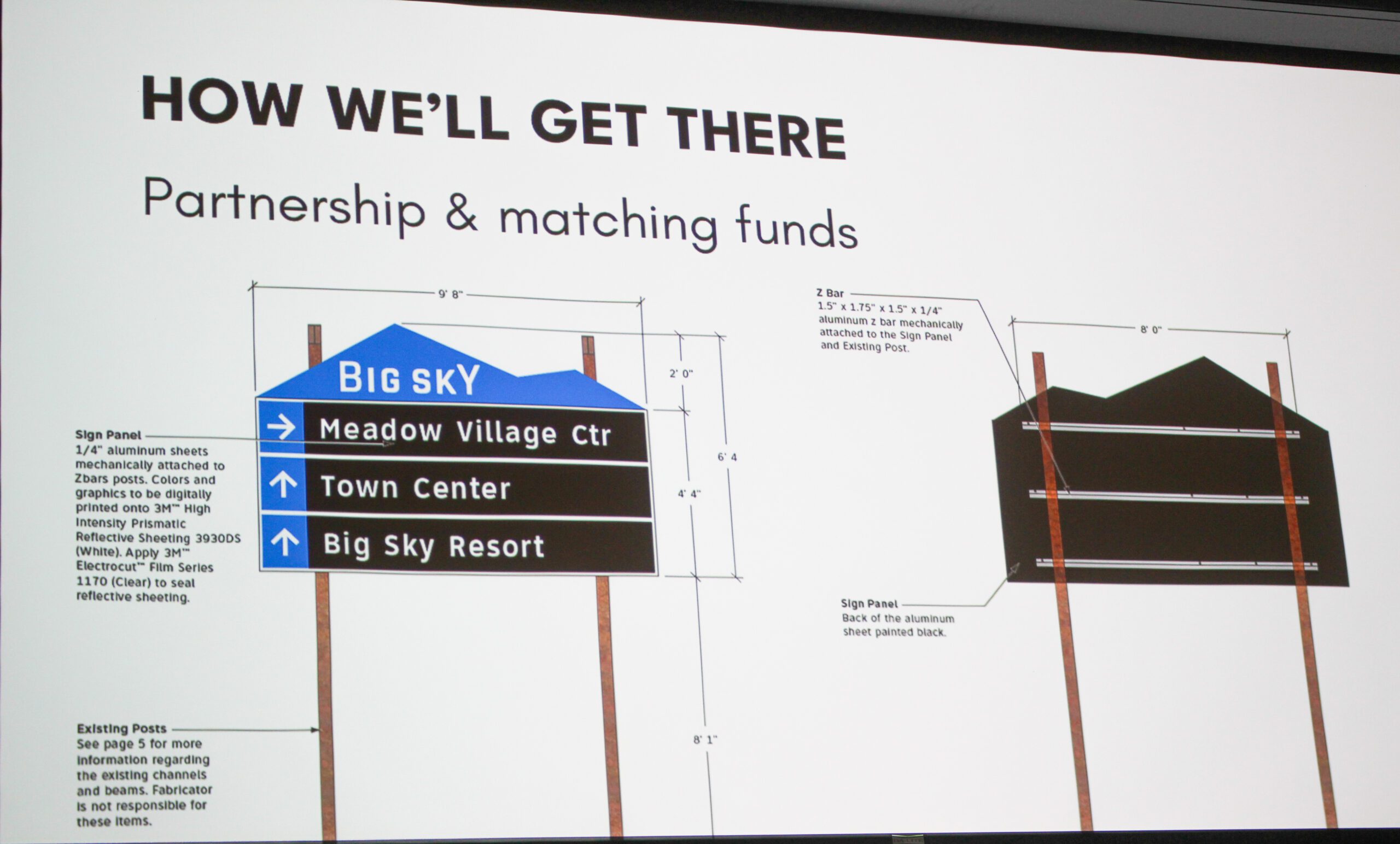
To address an “anti-tourism sentiment in this community” that percolated during COVID, Niva described his work with Visit Big Sky—a tourism marketing organization—to survey visitors and local residents on both sides of the Big Sky tourism experience.
Darren Brugmann, executive director of the Big Sky Transportation District, discussed the plan to improve public transportation options in Big Sky—and connecting routes to the Gallatin Valley. The transportation district has been working with a consultant to define future vision, and Brugmann said a strategic plan will be shared in the coming weeks.
Ron Edwards, general manager of the Big Sky County Water and Sewer District, introduced Johnny O’Connor, his replacement, and showed data on the uptick in wastewater flow since the mid-1990s. He thanked Resort Tax for funding roughly $27 million toward the new Wastewater Resource Recovery Facility, costing more than $50 million in total.
David and Goliaths on community vision—housing trust, Lone Mountain Land Company and Big Sky Resort
David O’Connor, executive director of the Big Sky Community Housing Trust, opened the final panel: building community. He spoke about the housing trust’s efforts to improve housing access and affordability in Big Sky, including condominium and apartment construction, and programs to bring housing units under workforce-only deed restrictions and to incentivize renting to local workers.
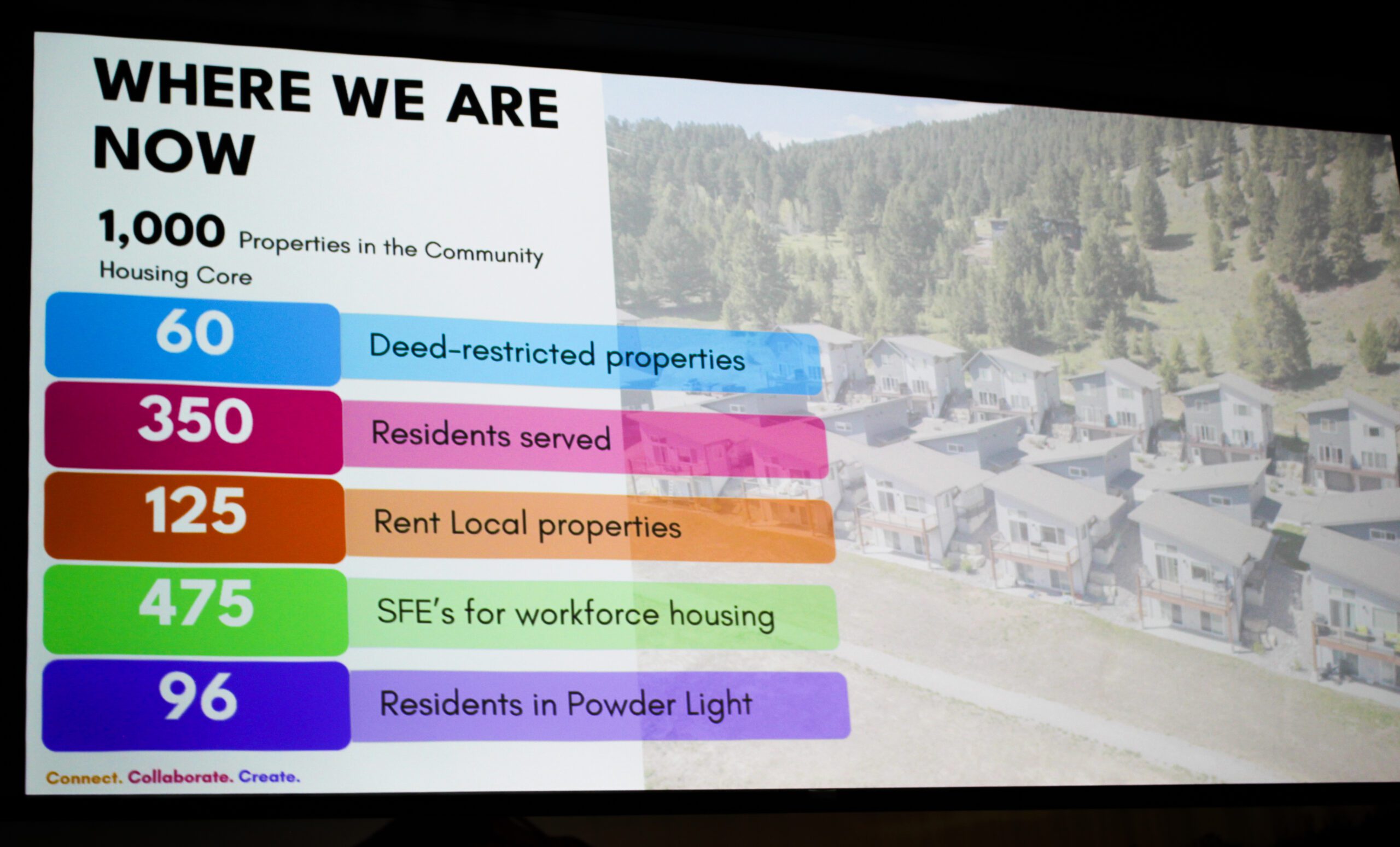
Matt Kidd, managing director of CrossHarbor Capital and Lone Mountain Land Company, began by thanking event attendees and Community Week organizers, and the dozen panelists that preceded him onstage. He then emphasized “interdependent goals” from the past decade: to make Big Sky a world class ski destination, and to make Big Sky a thriving, year-round community. Kidd also urged the community to “get involved, find common ground, and be nice to each other.”
Kidd later answered an audience question about LMLC’s development plans in Town Center and the south fork area, including the developer’s commitment to open space. He affirmed the company’s commitment to open space, adding that LMLC has not started any new projects in 2023, aside from workforce housing. More is likely to continue in 2024, he hopes.
Finally, Big Sky Resort General Manager Troy Nedved spoke to a 50-year party happening all winter long—the celebration of the resort’s milestone this season. Nedved said Big Sky Resort now hosts about 200,000 unique visitors each year. He also said the resort will provide 833 beds for employees this winter, nearing half of roughly 2,000 total. The resort has previously shared its goal to reach 1,000 beds by 2024.
Nedved also spoke about the new 75-person Lone Peak Tram as it wraps up construction and plans to open this winter. He said similar to Big Sky’s “pre-tram” and “post-tram” communities—divided as such by arrivals after December 1995—a new era will begin this winter. Soon, a gondola will connect the base area to the peak of Lone Mountain and help the resort become “the most technologically advanced lift infrastructure in North America,” he said.
Before the evening wrapped up, Zirkle asked the panel about “the missing middle,” referring to Big Sky’s costs of housing and living that create barriers for families and long-term community workers.
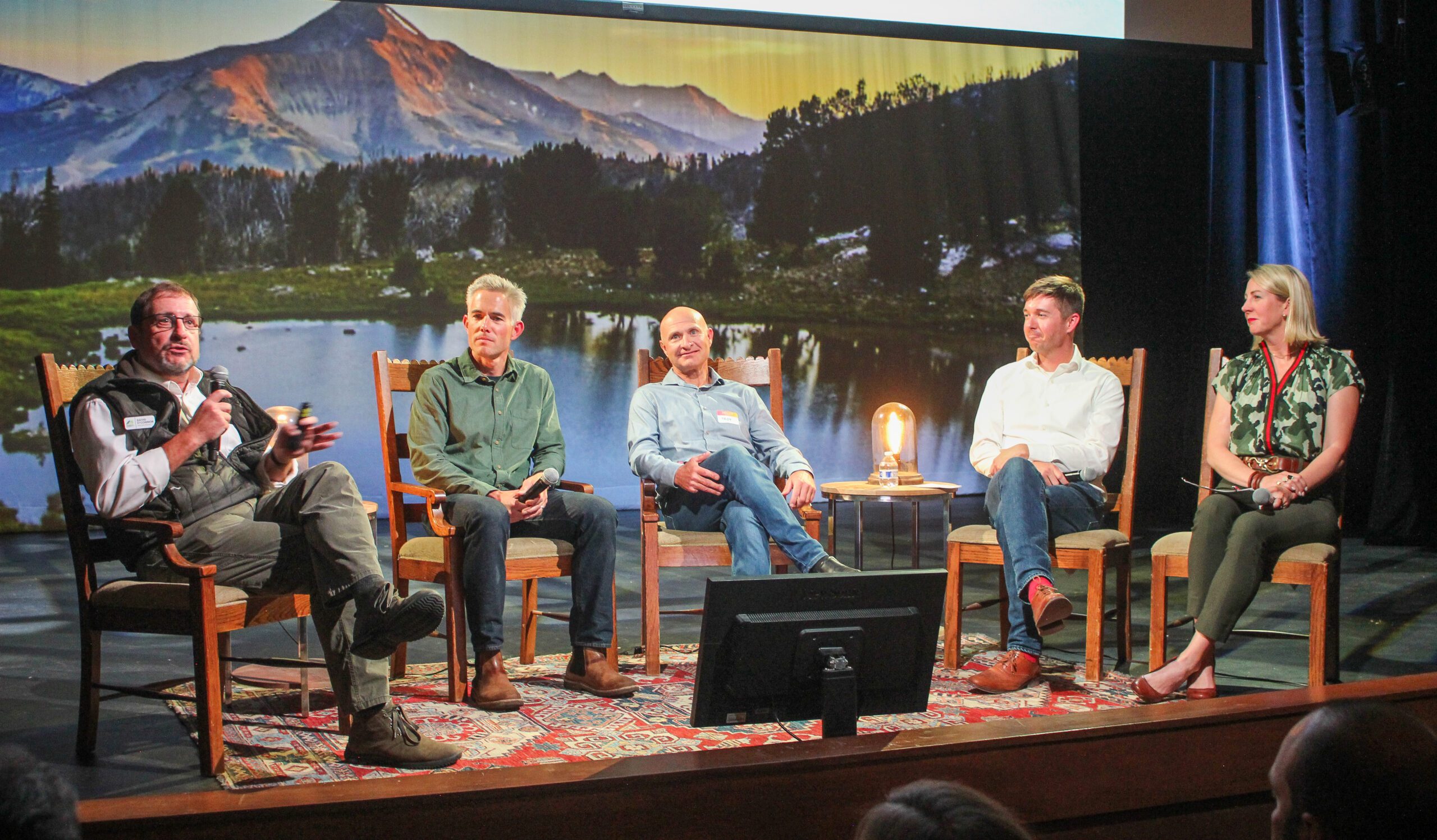
Kidd suggested that the Big Sky community extends beyond Big Sky—community members come from the Greater Yellowstone Ecosystem, he said, with emphasis on Bozeman.
“Five years from now, we want there to be more locals in Big Sky than there are today,” he added.
O’Connor said that the community is collaborating now more than ever, but Big Sky needs to be able to retain community leaders, a thought shared by Nedved, who believes Big Sky is early enough in its development that those leaders can help build better than many similar towns—some that face community challenges at higher levels of maturity.
“It’s not just an economic determination. It’s what makes a community, a community, is that shared sense of value and contribution,” O’Connor said.



